![]()
![]()
![]()
Use LEFT and RIGHT arrow keys to navigate between flashcards;
Use UP and DOWN arrow keys to flip the card;
H to show hint;
A reads text to speech;
7 Cards in this Set
- Front
- Back
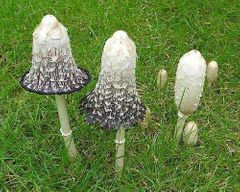
Shaggy ink cap, shaggy mane, or lawyer's wig |
Coprinus comatus Grows on lawns, gravel roads, and waste areas. Edible when young |
|
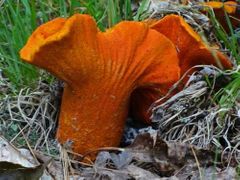
Lobster mushroom |
Hypomyces lactifluorum A fungus that overgrows members of the genera Lactarius and Lactifluus (milk-caps), and Russula (brittlegills), rendering them fully orange when mature Edible |
|
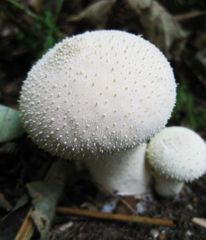
Common puffball, warted puffball, gem-studded puffball, or the devil's snuff-box |
Lycoperdon perlatum Grow in summer and fall. Usually found in deciduous woodlands, but also can be located on roadsides or urban areas, where it grows on soil, decayed wood and occasionally on wood-chip mulch. Edible when young |
|

Artist's bracket, artist's conk, artist's fungus, or bear bread |
Ganoderma applanatum A wood-decay fungus that causes a rot of heartwood in a variety of trees, most commonly beech and poplar. It can also grow as a pathogen of live sapwood, particularly on older trees that are sufficiently wet. Inedible |
|
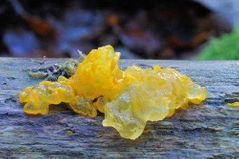
Witch's butter, yellow brain, golden jelly fungus, or yellow trembler |
Tremella mesenterica A common jelly fungus that grows parasitically on the mycelium of wood-rotting fungi in the genus Peniophora. Edible |
|
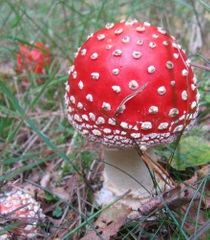
Fly agaric or fly amanita |
Amanita muscaria Fruiting in the summer and autumn, it forms symbiotic relationships with many trees, including pine, oak, spruce, fir, birch, and cedar Edible... barely |
|
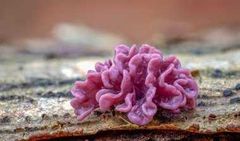
Jelly drops or purple jellydisc |
Ascocoryne sarcoides grows in clusters on the trunks and branches of a variety of dead woods. It can be found on some living trees as well like spruce. Occurs in late summer to autumn. Looks different depending on whether it's in sexual or asexual stage. Inedible |

